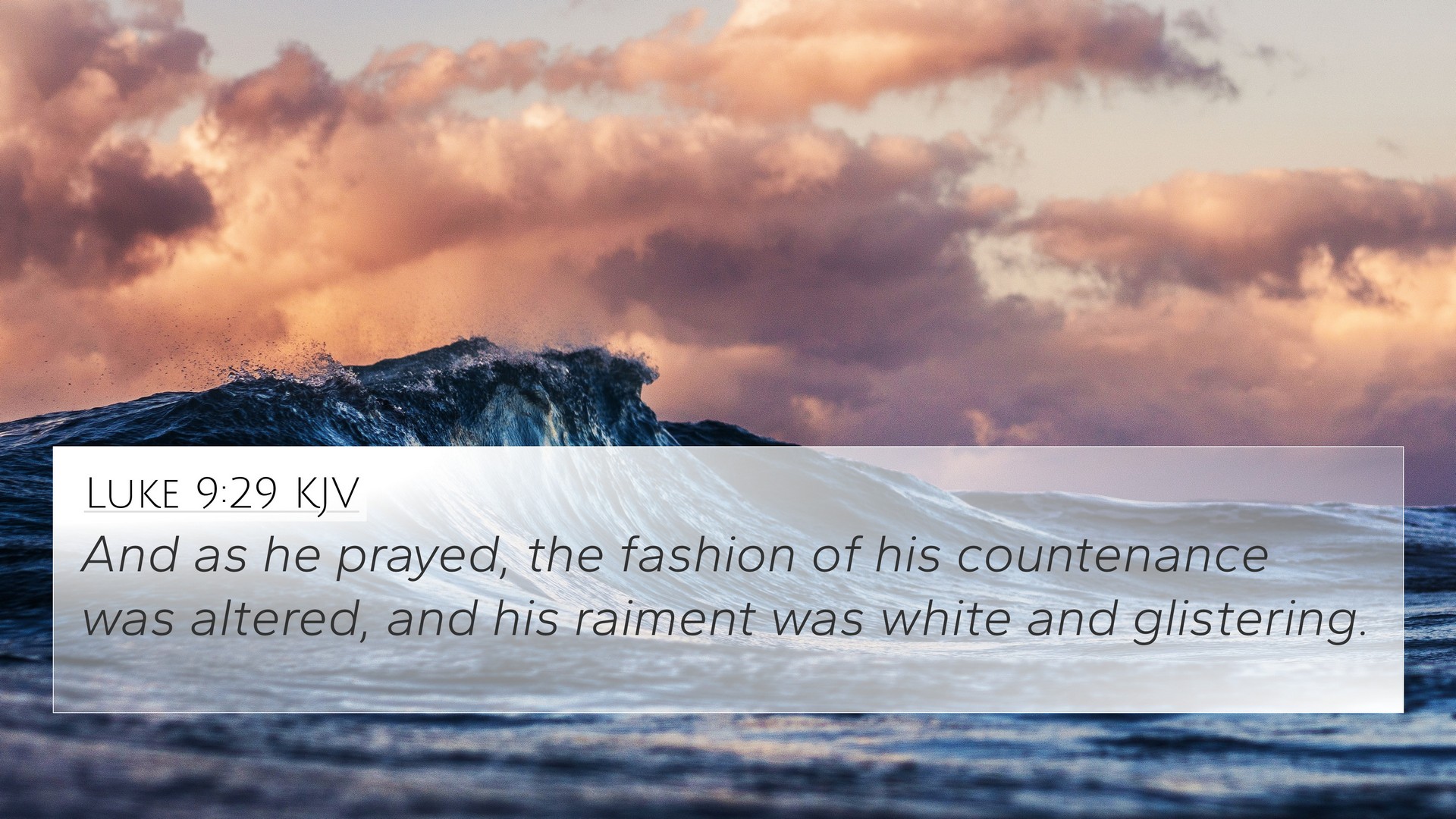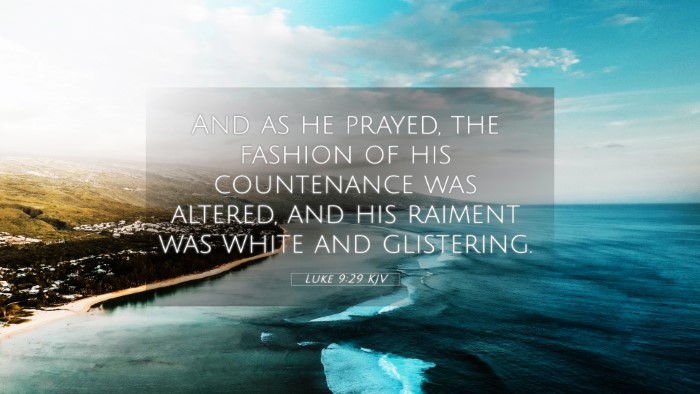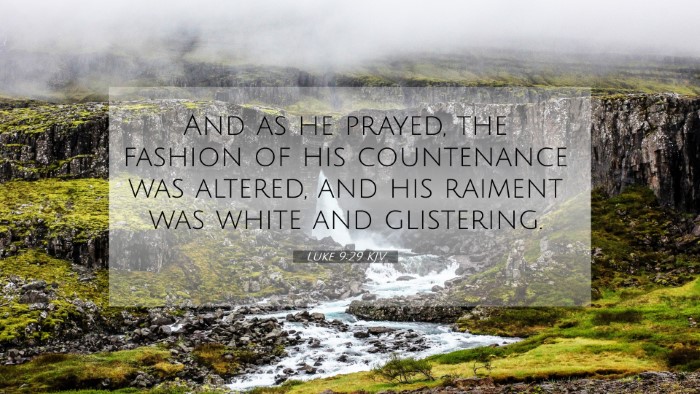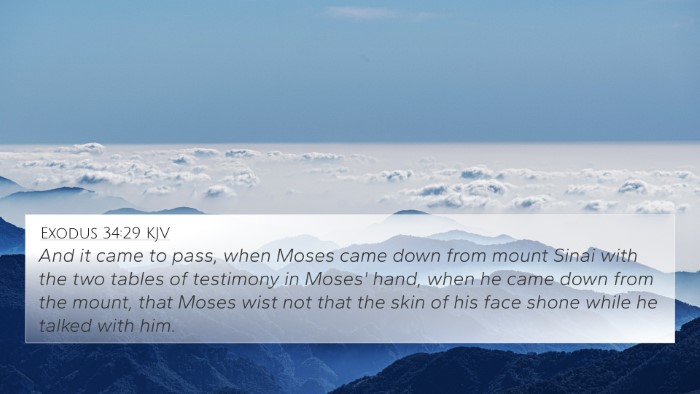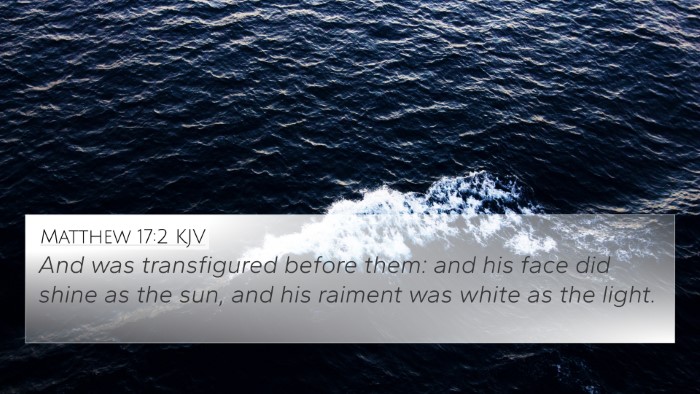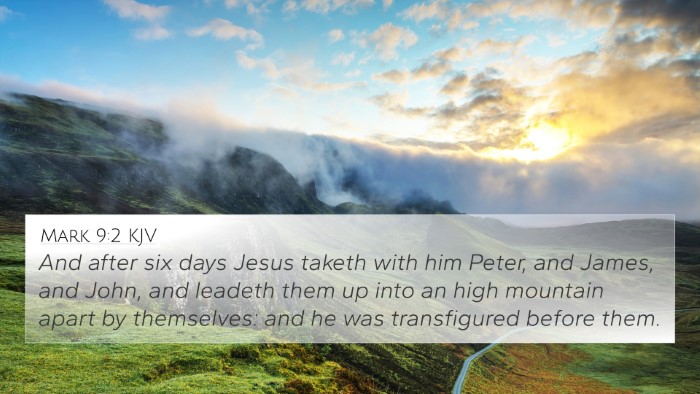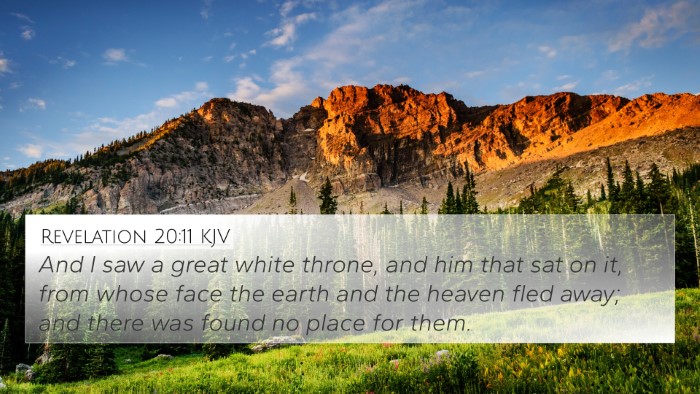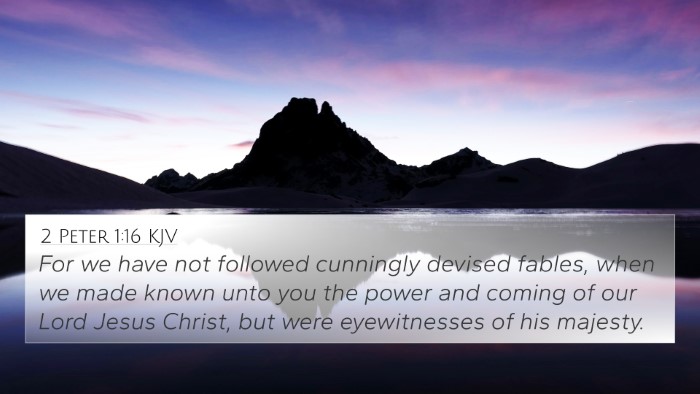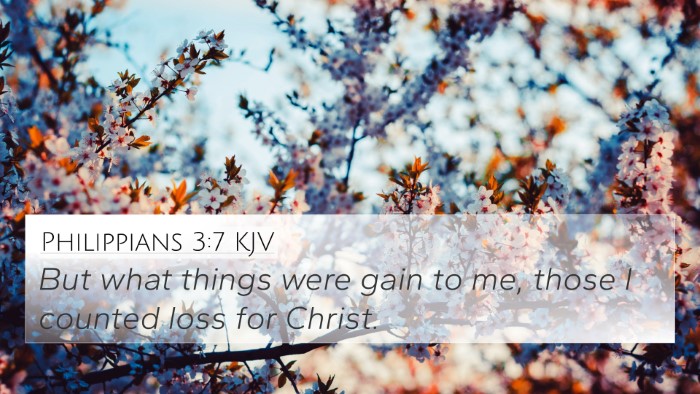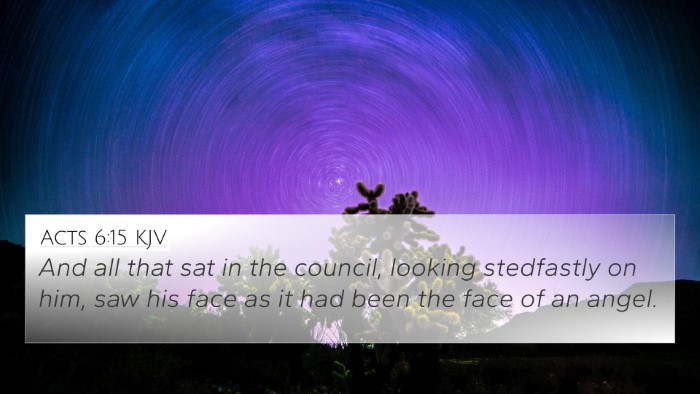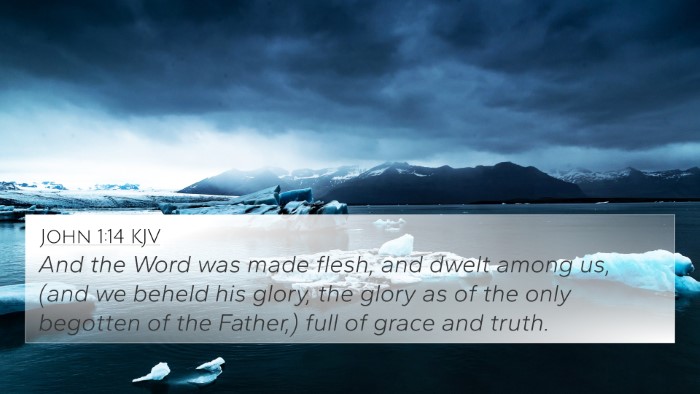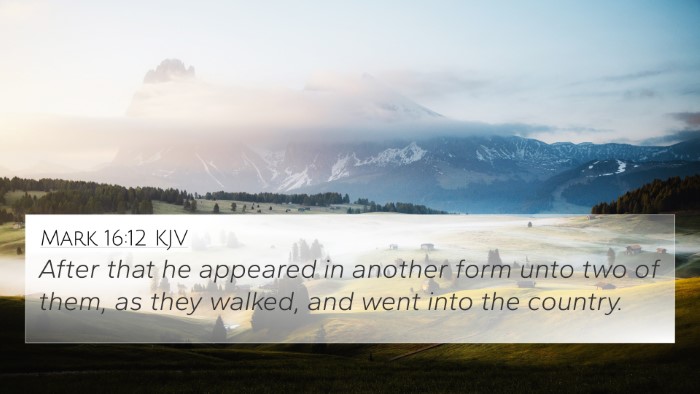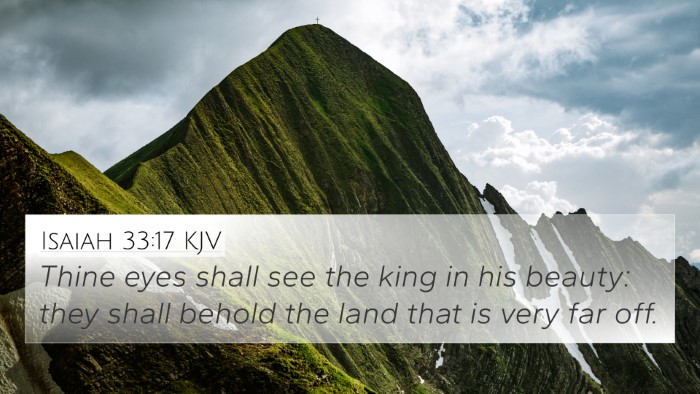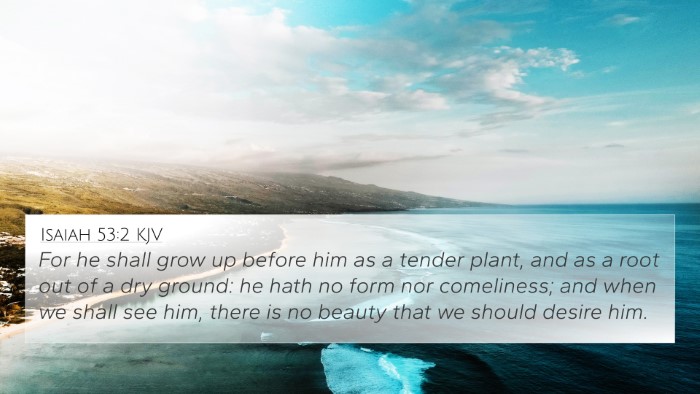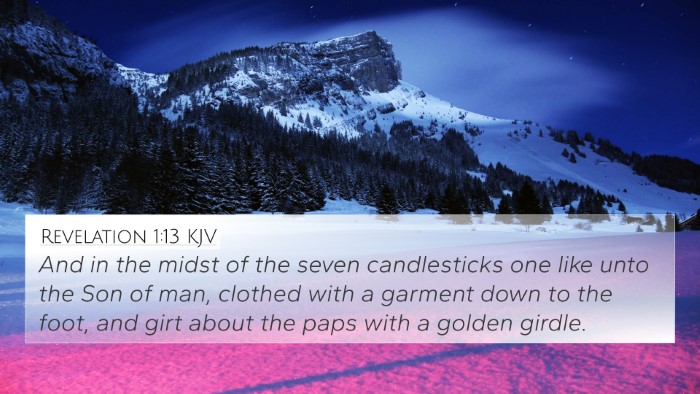Understanding Luke 9:29
Luke 9:29 states, “As he was praying, the appearance of his face changed, and his clothes became as bright as a flash of lightning.” This verse captures a significant moment during the transfiguration of Jesus, where his divine glory was revealed to his disciples.
Interpretational Insights
This verse has been reflected upon by various public domain commentaries, which offer profound insights into its meaning:
- Matthew Henry: Henry notes that this moment signifies a divine revelation and confirms Jesus’ identity as the Son of God. The transformation of Jesus serves as a powerful visual affirmation of His divine nature and the glory He embodies.
- Albert Barnes: Barnes emphasizes the importance of prayer in this context, suggesting that Jesus’ communion with the Father preceded this revelation. He comments on the brilliance of Jesus' appearance, which reflects His eternal glory and divine majesty.
- Adam Clarke: Clarke discusses the significance of Jesus' transfiguration not only in terms of His identity but also in its purpose for the disciples' understanding of His mission. It served to strengthen their faith and provide assurance of His divine authority.
Connections with Other Bible Verses
This verse can be linked to several other biblical texts, providing a deeper understanding of its themes:
- Matthew 17:2: “There he was transfigured before them. His face shone like the sun, and his clothes became as white as the light.” This cross-reference describes the same event from another Gospel’s perspective, highlighting the glory of Jesus.
- Exodus 34:29: “When Moses came down from Mount Sinai, with the two tablets of the Covenant in his hands, he was not aware that his face was radiant because he had spoken with the Lord.” This verse shows the connection between divine encounters and physical transformation.
- John 1:14: “The Word became flesh and made his dwelling among us. We have seen his glory, the glory of the one and only Son, who came from the Father, full of grace and truth.” This illustrates the manifestation of God's glory in Jesus.
- 2 Peter 1:16-18: “For we did not follow cleverly devised stories when we told you about the coming of our Lord Jesus Christ in power, but we were eyewitnesses of his majesty.” This verse refers to the apostolic witness of Jesus' glorious appearance.
- Revelation 1:16: “His face was like the sun shining in all its brilliance.” This description of Jesus in Revelation reinforces the divine glory seen in the transfiguration.
- Hebrews 1:3: “The Son is the radiance of God’s glory and the exact representation of his being.” This verse connects the concept of Jesus as the ultimate revelation of God’s nature.
- Isaiah 60:2: “See, darkness covers the earth and thick darkness is over the peoples, but the Lord rises upon you and his glory appears over you.” This foretells the light of God's glory that Jesus embodies.
Parallels and Thematic Connections
Luke 9:29 provides thematic continuity with various portions of scripture, emphasizing the significance of divine revelation and transformative encounters with God:
- Transformation through Divine Encounter: Many accounts in scripture depict a physical and spiritual transformation occurring in the presence of God, echoing the theme seen in Luke 9:29.
- The Role of Prayer: The emphasis on Jesus’ prayerful state prior to His transfiguration aligns with scriptures that teach the power of prayer and communion with God (e.g., James 5:16).
- Divine Authority: The transfiguration reinforces Jesus' authority as the Messiah, paralleling instances where God's glory is linked to His sovereignty.
- Encouragement for Discipleship: This moment served as a profound encouragement to the disciples, paralleling other events where God reassures His people (e.g., Matthew 28:20).
Applying the Insights
Understanding Luke 9:29 invites believers to reflect on their own experiences of encountering God.
Through tools for Bible cross-referencing and comparative Bible verse analysis, believers can explore the connections and thematic links to deepen their spiritual understanding.
Conclusion
Luke 9:29 is not merely a narrative account but a pivotal moment that invites exploration through inter-Biblical dialogue. By incorporating cross-references, one can uncover the rich tapestry of prayer, transformation, and divine revelation that connects both the Old and New Testaments.
